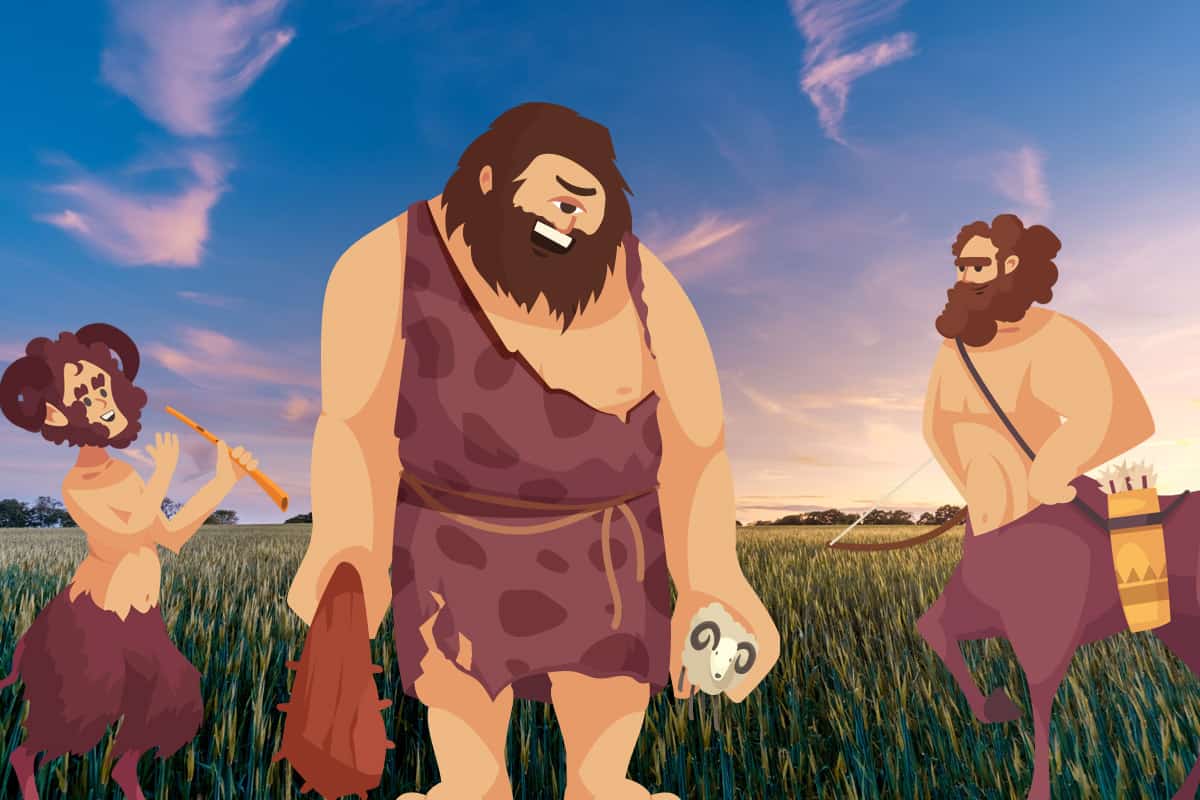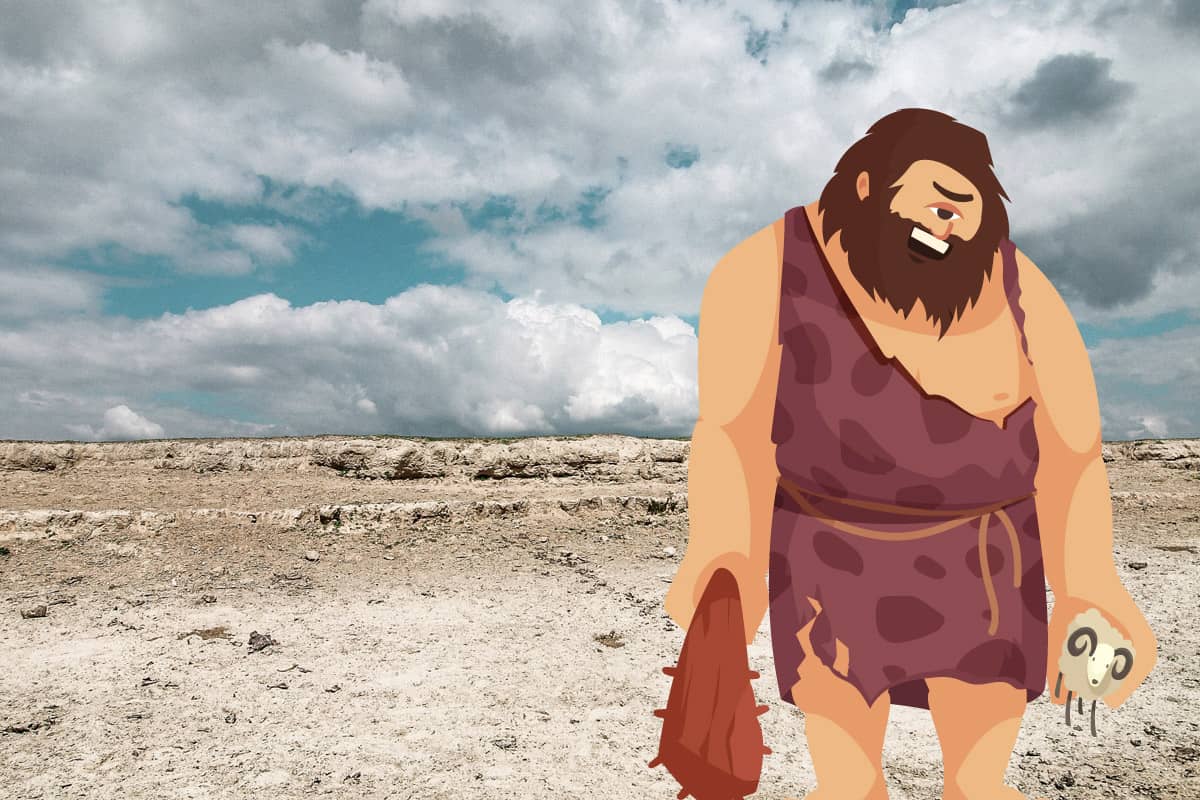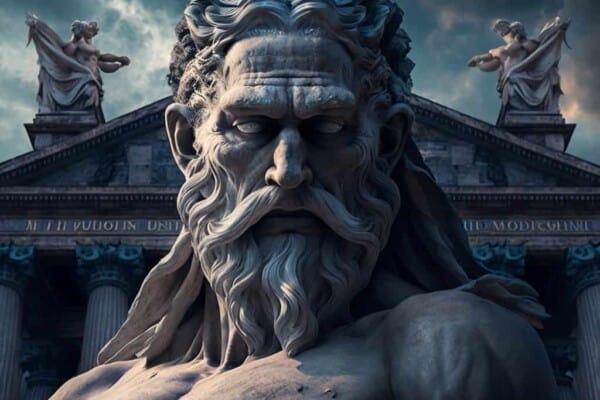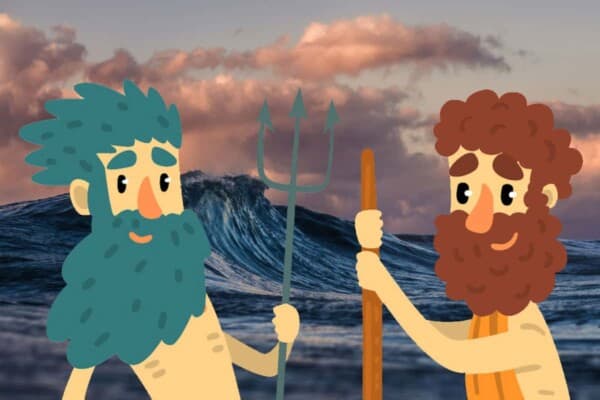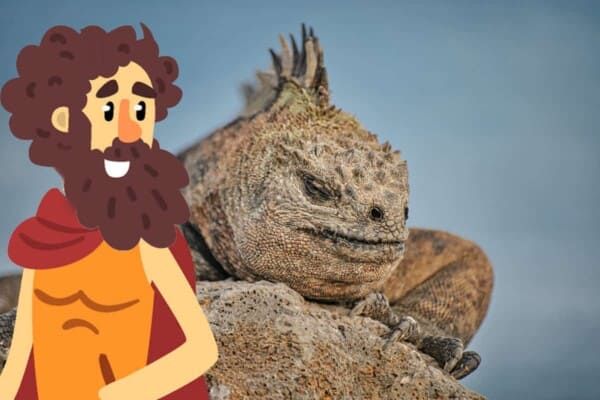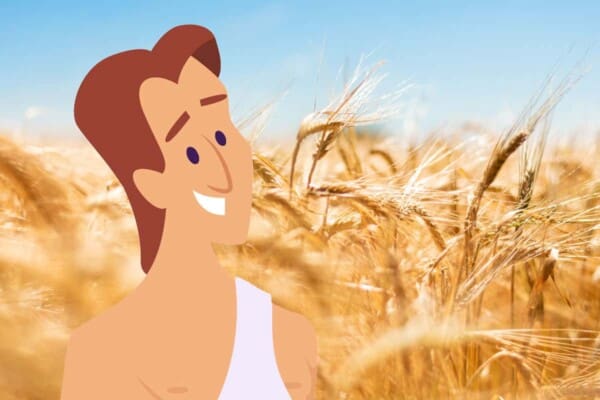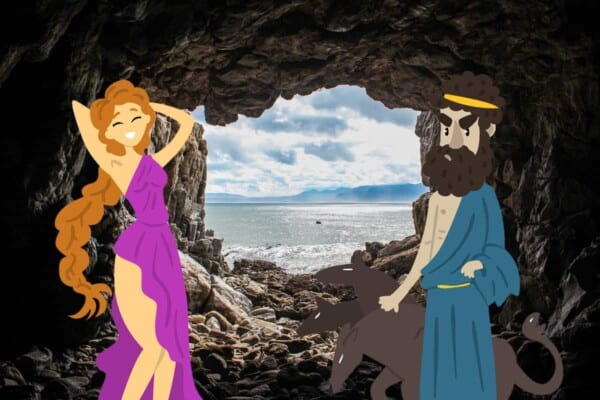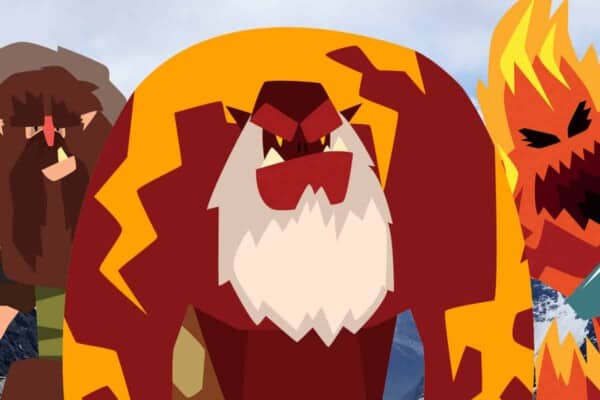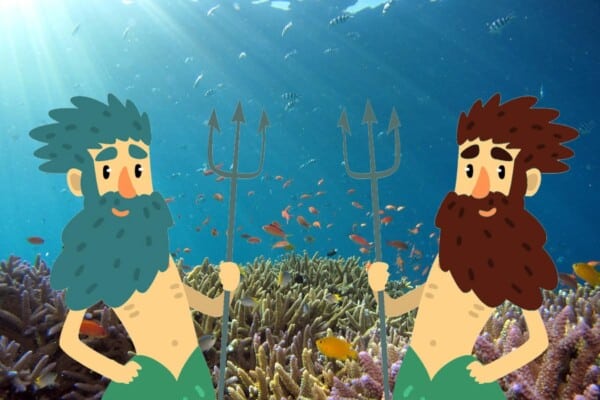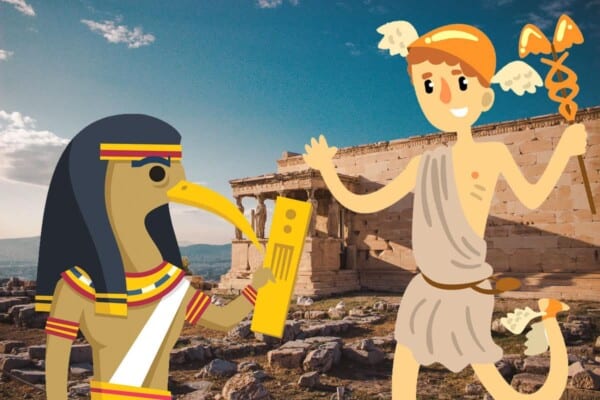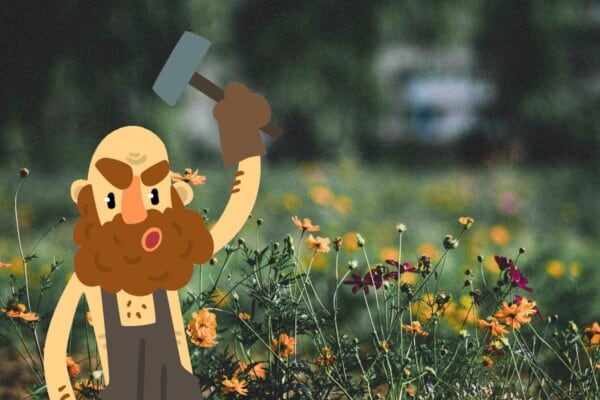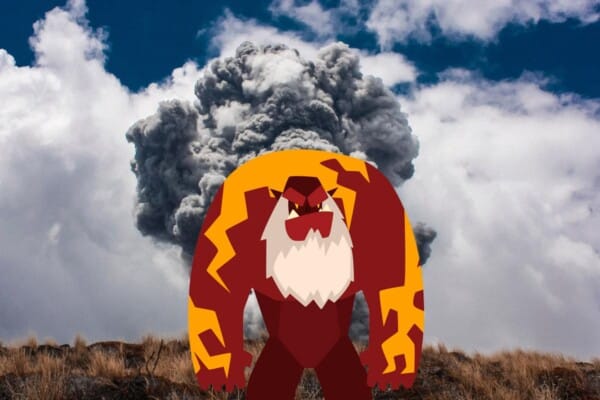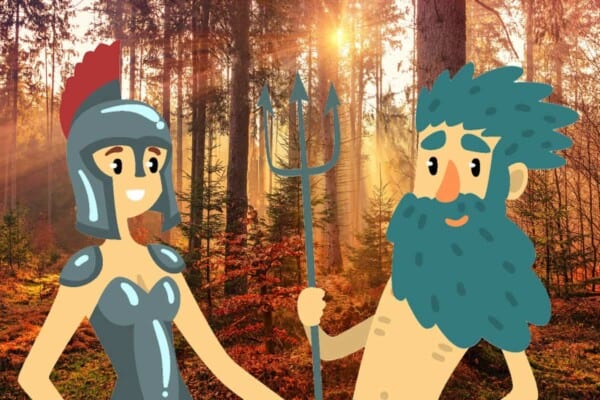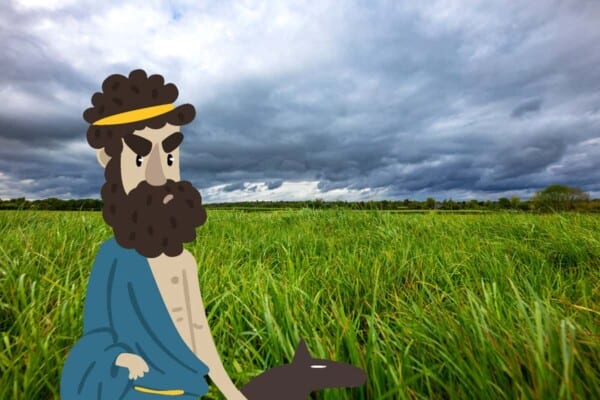Greek mythology has an overwhelming number of strange creatures and monsters.
There is such incredible variety and it is often difficult to identify or distinguish the most important. So, I’ve put together my own list of the most important creatures and monster in Greek mythology. Hope you enjoy!
Important Creatures and Monsters from Greek Mythology
#1 – The Argus
The Argus was a giant said to have 100 eyes. In an early myth he is said to have killed a bull that was terrorising the province of Arcadia.
Given Argus had 100 eyes, he was thought of as a good guard. With this in mind, Hera sent Argus to watch over Io, a mistress of her husband Zeus. In response, Zeus sent Hermes to deal with Argus. Hermes played his lute to lull the great giant to sleep. He then chopped off his head. Hera saw this and took the 100 eyes and placed them on the tail of the peacock. The peacock then became a symbol of Hera.
#2 – Cerberus
Cerberus was the offspring of Typhon and Echidna. He was a gigantic three-headed dog who was said to guard the Underworld and could be calmed by music and food.
Cerberus was thought to have originated from the Egyptians who were known to have large and fearsome dogs guarding their dead.
The three heads of Cerberus were given the task of guarding the portals of death by Hades. Each head was turned towards one portal. On three occasions, Cerberus strayed from his responsibilities. He was put to sleep by Orpheus, given a drugged cake by Sibyl, and captured by Heracles as Heracles’ 12th and final labor.
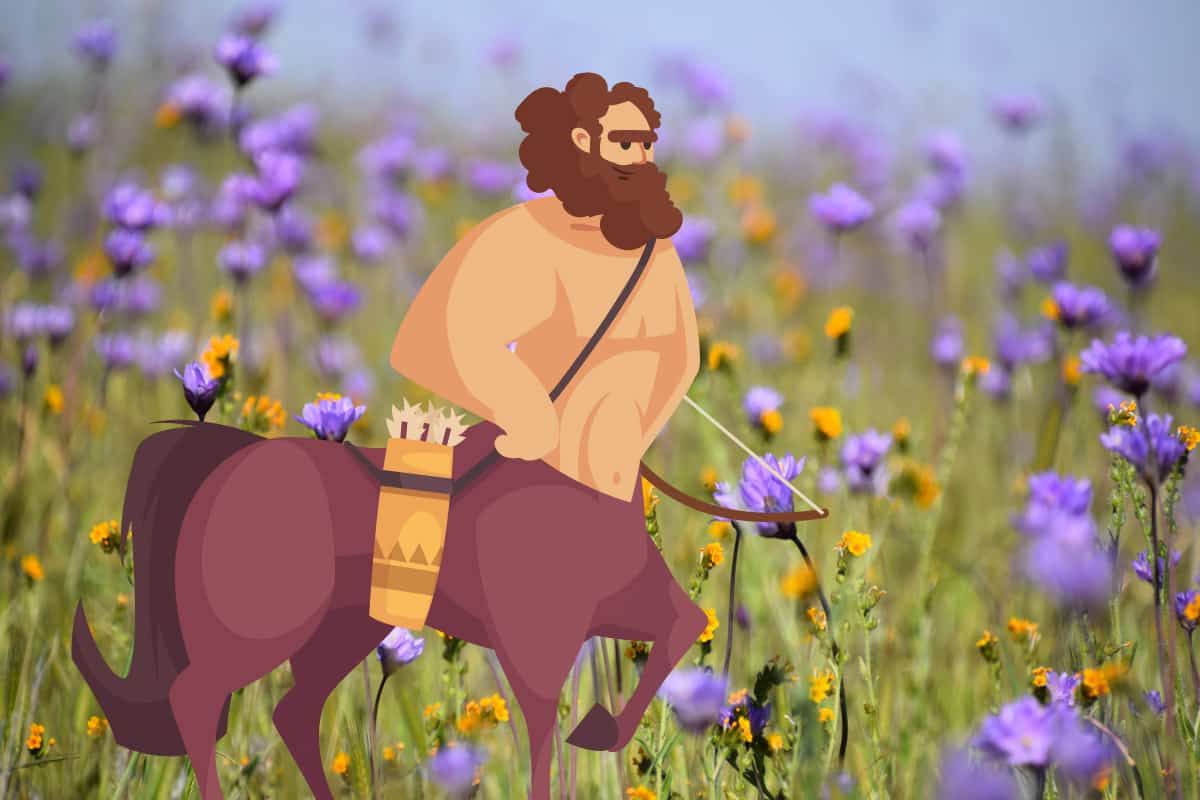
#3 – The Centaurs
Centaurs were the sons of Centaurus. They were half man and half horse and were known for their unruly and wild behavior. They were often depicted as drunk and violent.
The story of the centaurs likely developed around 2000 B.C. Greece when migrating people saw primitive people riding horses. To those watching, it may have seemed as if they were looking at an animal who had a head and torso of a human and the back end of a horse.
In one myth, the centaurs were invited to the wedding of the Lapith king where they got severely drunk. They then said the Lapith land belonged to them and decided to carry off the Lapith women in retaliation. This event led to the Centauromachy which is often depicted in art.
#4 – Charybdis
The Charybdis was known to be an underwater monster who often took the form of a large whirlpool and would destroy passing ships.
In one myth, the Greek hero Odysseus sailed towards the Charybdis. He had the choice of either dealing with Charybdis or dealing with another monster nearby called the Scylla in order to pass by. He initially decided to deal with Scylla, however, his ship was eventually sucked into the Charybdis. He managed to escape while the rest of his crew died.
Once thought to have been a woman filled with greed, the Charybdis was said to have stolen and eaten cattle from her neighbours. Her actions made Zeus angry, so he threw her into the sea where she became a whirlpool. Her and Scylla were partners in this part of the world, destroying ships and their men. If sailors didn’t pass exactly in the middle of the two, they would be destroyed by either the Charybdis or Scylla.
#5 – The Chimera
The Chimera was the offspring of Echidna and Typhon. It was a monster who breathed fire, had a lion’s head, a goat’s body, and a serpent’s tail.
The origin of the Chimera may be tracked back to a metaphor for the volcano in Lycia. The volcano was said to have terrible eruptions and to have caused as many problems as the Chimera did.
Causing havoc in Lycia, the Chimera was said to have been destroyed by Bellerophon who rode on Pegasus and shot the monster with arrows until it died. Other accounts say that the Chimera was killed when Bellerophon drove a lead-tipped lance into the Chimera’s flaming throat.
#6 – The Cyclopes
The Cyclopes were said to be the sons of Uranus and Gaia. They were giants who had one eye in the centre of their heads. They were also metal-workers who created thunderbolts for Zeus, or in some myths they were master builders.
Uranus imprisoned the Cyclopes in Tartarus because he was afraid of them. Cronos eventually released them, but then became so afraid of them too that he imprisoned them in the Underworld.
When returning to Greece Odysseus encountered an island of Cyclopes. They ate more than 16 soldiers of his soldiers. Odysseus got the Cyclopes drunk and escaped by blinding one of them.
The Cyclopes were thought to have built the walls of Tiryns, Mycenae, and some other ancient citadels in Greece. The stones that were used to build the walls were so big, that the ancient Greek people thought they could have only been built by the Cyclopes.
#7 – The Furies
The Furies were said to be the children of Gaia. They were known as the Greek goddesses of vengeance or as Hades’ hell-hags.
Known to chase after those who committed crimes, especially for the murder of family members, the Furies were ruthless avengers. Some believed that their punishment extended even after death, in the Underworld.
Orestes, the son of Agamemnon, was haunted by the Furies because he killed his own mother Clytemnestra. They followed him everywhere, including Delphi where he fled because he had been offered protection by Apollo. Athena got involved and freed Orestes from his crime. The Furies were then said to have stopped their pursuit.
#8 – Geryon
Geryon was a three-headed beast that lived on Erythea. He was known for owning a beautiful and valuable herd of cattle. He was sometimes referred to as the “Siamese Triplet.”
For one of Heracles’ labors, he was tasked with stealing Geryon’s prized cattle. Heracles ended up killing both Geryon and his two-headed dog, Orthus. He then transported the prized cattle back to King Eurystheus.
It was said that the blood of Geryon resulted in a tree sprouting that produced fruit like cherries that were used to make a blood-red dye.
#9 – The Griffins
Griffins were lions with the heads and wings of eagles.
The concept of the Griffin entering Greece may have come from the Near East in the second millennium. But, although Griffins were often depicted in artist works, there is actually no ancient text that speaks about their purpose or role in Greek mythology.
Living far North of the Mediterranean, the Griffins were said to guard large amounts of gold hidden underneath the snow. Their neighbors, the Arismapsi would constantly try and steal the gold, so the Griffins were always on guard.
#10 – The Harpies
The Harpies were said to be the daughters of Thaumus and Electra. They were fierce creatures that were said to have the beautiful form of women, but horrible, ugly faces. They were also said to have talons and very bad tempers.
Hades employed the Harpies to bring back people who refused to die. The Harpies may also have been called Zeus Hounds as Zeus may have used them to punish or harass those that bothered him.
In one myth, Phineus the king of Salmydessus made Zeus angry. The Harpies took retribution by eating all the food on his plate and then defecating in it. He would have died had it not been for the Argonauts, who drove off the Harpies and may have even killed them.
#11 – The Hecatonchires
Hecatonchires were the offspring of Gaia and Uranus. They were hundred-handed giants.
It was said that the Hecatonchires were representative of warriors that were known to be organized into groups of 100 men.
When the Hecatonchires were about to be born, Uranus decided he was scared of them. He tried to push them back into Gaia. He failed, so instead, he imprisoned them in Tartarus.
Gaia was unhappy with this decision, so she had Cronos overthrow Uranus. But, Cronos also was afraid of the giants, so he too locked them away. They were eventually released by Zeus, whom they helped to win in his fight against Cronos and the Titans.
After the war, they became jailers of the defeated Titans.
#12 – The Hydra
The Hydra was a creature with many heads who was said to be the offspring of Echidna and Typhon. It was also said that when one head was cut off, two new ones would grow in its place.
The Hydra was Heracles 2nd labor. He found that each time he cut off a head, two more would sprout in its place. With the help of Iolaus, Heracles seared each headless neck which helped him to eventually beat the Hydra. Heracles then dipped his arrows into the Hydra’s poisonous blood.
After Heracles killed the Hydra, the hundred heads turned into underground springs where pure water ran.
#13 – The Gorgons
The Gorgons were the daughters of Ceto and Phorcys. They were said to have the bodies of women, claws for hands, and snakes for their hair.
Although Medusa’s sisters were said to be immortal, Medusa was not. Perseus ended up killing her and using her head to turn his enemies to stone.
The three Gorgons were once extremely beautiful. Poseidon actually tried to seduce Medusa. This courting led to Athena becoming very jealous.
She ended up changing Medusa into a horrible looking creature with the wings, claws, and hair that was made out of snakes. She was so ugly that if anyone looked at her, they would turn to stone. When her sisters went to Athena and told them how wrong the punishment was, Athena took it upon herself to turn them into ugly creatures too.
#14 – The Graeae
The Graeae were also known to be daughters of Phorcys and Ceto. The term Graeae means, “old woman.”
The sisters came into the world as old women and shared a single eyeball. They were known to pass it back and forth in order to see.
In one of the myths, Perseus wanted to know where he could find the Graeae’s sister, Medusa.
They refused to tell him her secret location. He forced them into giving it up by stealing their eye as they were passing it back and forth between them. He gave them their eye back once they had told him where they could find Medusa.
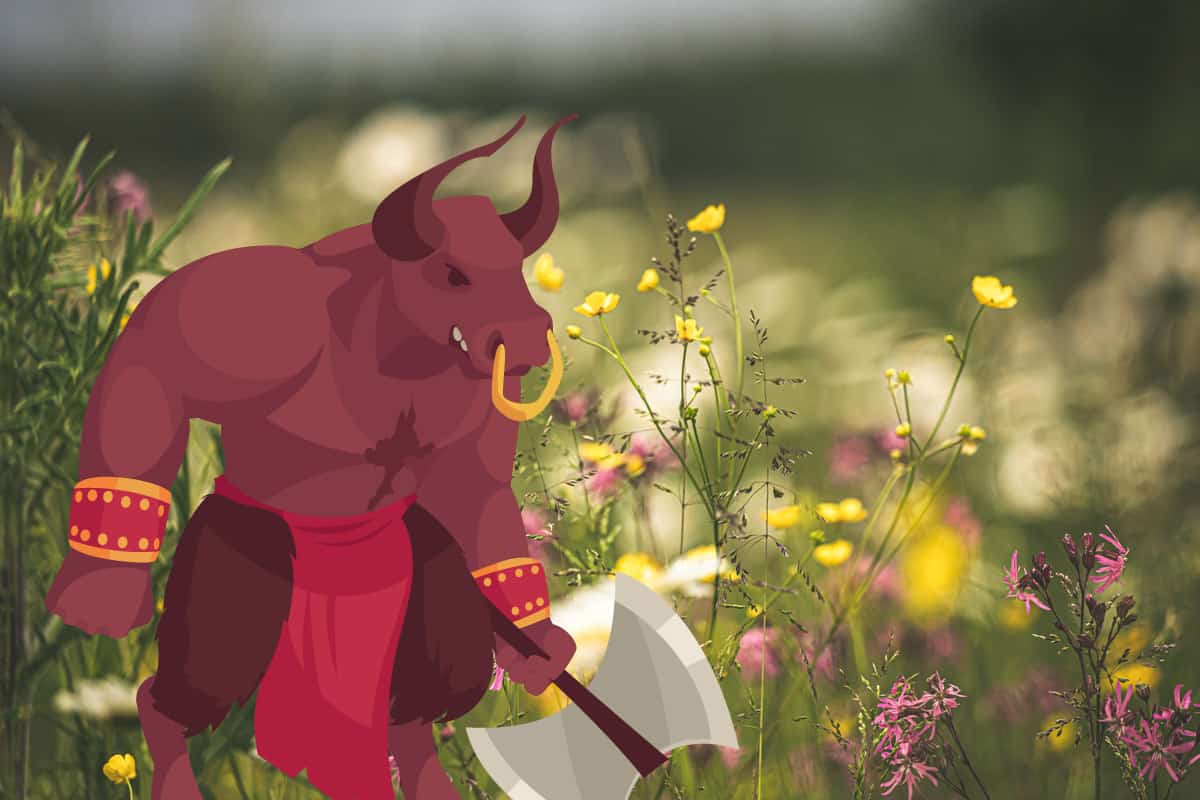
#15 – The Minotaur
The Minotaur was the result of the Queen of Crete, Pasiphae, mating with a bull. He was, therefore, half man and half bull and was said to be a hideous creature.
The concept of the Minotaur may have come from the Minoan priests who were known to wear bull masks when they performed rituals.
When Pasiphae mated with the bull and had the Minotaur, King Minos kept him a secret. He called upon his inventor and mason Daedalus to create a Labyrinth so the Minotaur would never be found. The Minotaur spent its days in the maze eating both men, women and children who were sent as sacrifices. The Athenian hero Theseus eventually found the Labyrinth and killed the Minotaur.
#16 – The Nemean Lion
The Nemean Lion was a famous golden maned man-eating lion and a major character in one of the myths of Heracles. The lion was said to be the son of Orphrus, the 2-headed dog of Geyron.
It was said that the fur of the lion couldnt be penetrated no matter the opponents weaponry. The lion would terrorise the surrounding villages and towns for many years.
In the end, Heracles was sent to kill the beast. Instead of using weapons he used his own hands to fight the lion. In the end he was victorious and he wore the lions skins as armour in the future.
#17 – Orthrus
Orthrus was Geryon’s two-headed, serpent-tailed dog. He was known to guard Geryon’s prized cattle and was the spawn of Ekhidna. Orthus was said to be the father of the Sphinx and the Nemean Lion.
It is possible that Orthrus may have been connected to the constellations Canis Major and Minor.
Orthrus was killed by Heracles when Heracles came to steal Geryon’s cattle to bring back to King Eurystheus as his tenth labor.
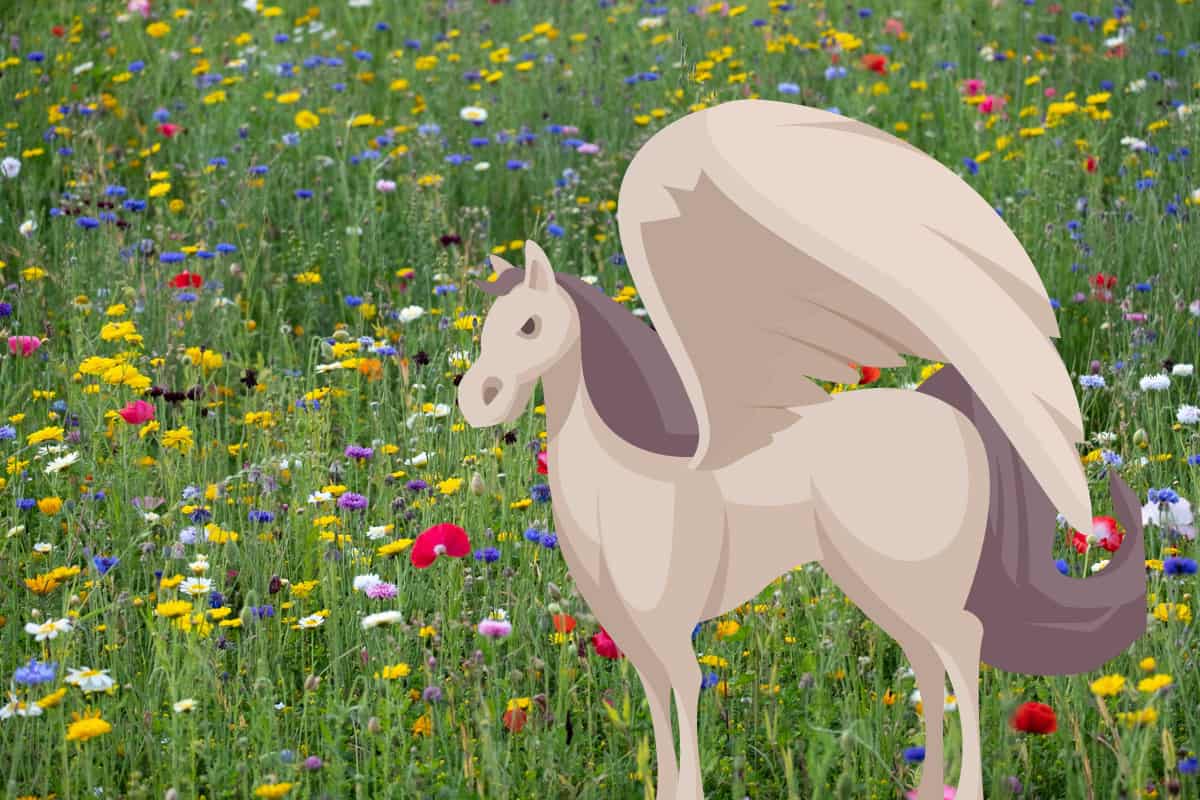
#18 – Pegasus
Pegasus was a flying horse who sprang out of Medusa’s blood once her head was cut off by Perseus.
It was believed that Medusa had been impregnated by Poseidon and was carrying this creation, Pegasus, at the time of her death.
Bellerophon wanted to ride Pegasus, but Pegasus didn’t like humans riding him. Bellerophon asked for advice from a seer who told him he needed to make a sacrifice to Athena for her help.
When Bellerophon awoke the next day, he had been given the bridle of Pegasus and so Pegasus allowed him to bridle and ride him. Together, Bellerophon and Pegasus flew to Lycia where Bellerophon ended up killing the Chimera.
#19 – The Phoenix
The Phoenix was a legendary bird with no real origin.
It was believed the Phoenix raised itself on sunlight and sea spray and lived to be 500 years old before it would die and be reborn.
Each time the Phoenix was about to die, it would take the elements from fire and water and be born again. It was a beautiful creature who was gold and red with gorgeous green eyes.
Sometimes, the Phoenix could be seen building a nest that resembled a funeral pyre. The Phoenix would then set the nest on fire, dying in the process, but being reborn and rising from its ashes.
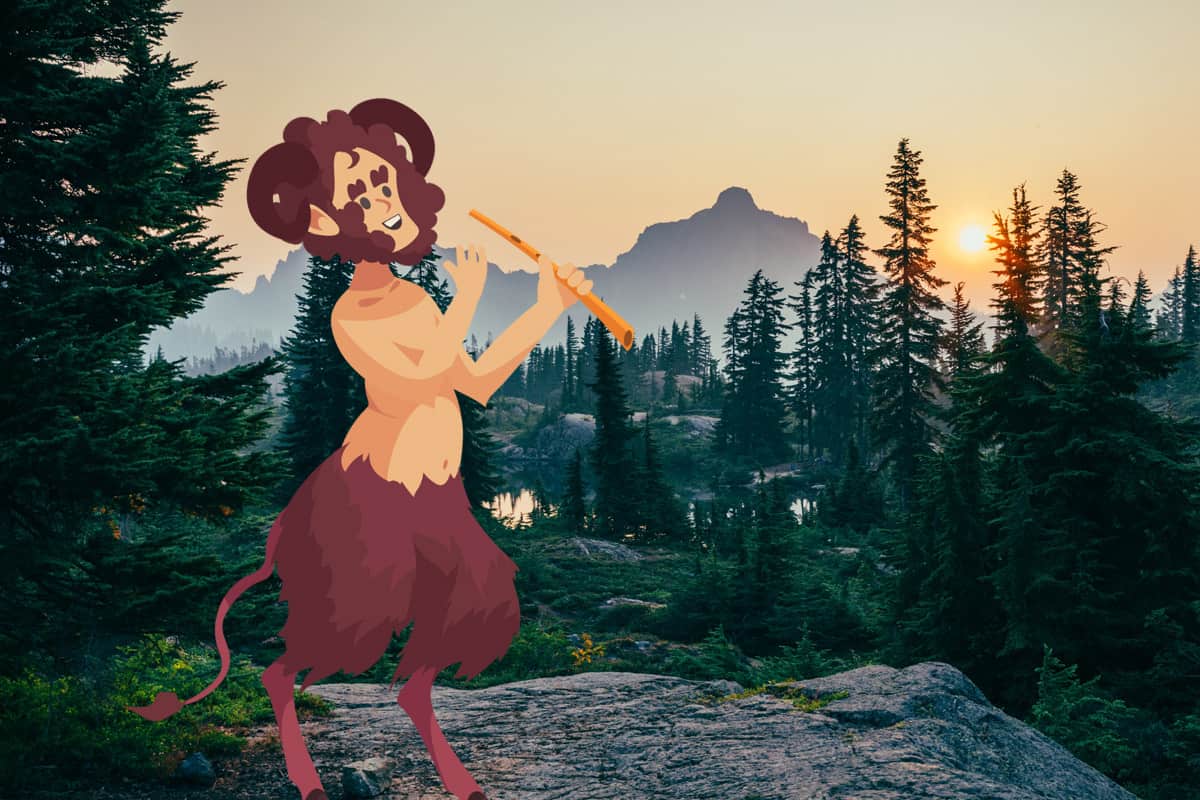
#20 – The Satyrs
The Satyrs were part human and part goat (sometimes monkey). They were very mischievous creatures who liked to torment herdsmen and shepherds. They were also said to be the attendants of Dionysus.
One of the most important Satyrs was Silenus. He was said to be the tutor of Dionysus. He was very intelligent and wise and may have had the gift of prophecy. King Midas wanted to have Silenus’ knowledge, so he drugged him and demanded the Satyr tell him the secret of human life.
Originally said to be men, the satyrs were the sons of Hermes and Iphthima. They were turned into the strange half-human, half-goat men by Hera to punish them for not watching over Dionysus. Once she had turned them into the strange creatures, they followed Dionysus everywhere he went, including festivals and other events.
#21 – Scylla
Scylla was a creature who lived in the Straits of Messina. She was a creature with the body of a woman but had six necks with dogs growing from her waist.
When Odysseus sailed by Scylla and Charybdis, Scylla ended up eating six of his men. Odysseus had been warned by Circe that Scylla was a horrible and dangerous sea monster, but he had to pass through, so he had no other choice but to face her. Scylla is representative of the dangers sailors had to face on the open waters.
At one time, Scylla was known to be a beautiful sea nymph and was loved by Glaucus. Circe was rather taken with Glaucus herself, so she was jealous. She made a poisoned brew and poured it into the water where Scylla bathed. The poison turned Scylla into part woman, part creature with six hungry dogs growing from her waist.
#22 – The Sirens
The Sirens were nymphs who lured sailors to their deaths by singing beautiful songs. While some say they were beautiful, others say they were hideous creatures.
Likely daughters of one of the Muses and Achelousa river god, the Sirens were a major obstacle and danger for sailors. Their songs would make the sailors go mad and they would end up crashing their ships.
Circe warned Odysseus about the Sirens. Before he and his crew set sail, the crew plugged their ears with wax so the Sirens’ songs wouldn’t bother them. Instead of using wax, Odysseus was tied to the mast. He went mad when he heard the Sirens sing, but his crew pulled him back and stopped him from jumping off the ship. In despair at their failure, the Sirens ended up killing themselves.
#23 – The Sphinx
The Sphinx was said to be the offspring of Echidna and Orthos. She was a half-woman. half-beast monster, who gave impossible riddles. Some of the riddles she learned may have been taught to her by the Muses or Laius.
Known to terrorize the area around Thebes, the Sphinx was sent there either by Hera or Dionysus. Whenever someone would walk by, the Sphinx would jump out and ask them a riddle. If the person failed to solve it, the Sphinx would eat them.
One day Oedipus happened to cross the path of the Sphinx. He ended up solving the riddle and killing the Sphinx. In return for ridding Thebes of the Sphinx, the townspeople made Oedipus king of Thebes.
#24 – The Stymphalian Birds
The Stymphalian Birds were huge birds with giant wings and claws made from bronze. They ate human flesh and travelled in very large packs that would block out the sun. They were said to live in Arcadia by the shore of Lake Stymphalus.
The idea of the Stymphalian birds may have come from marsh birds like the crane and ibises. Both were large birds that lived in marshlands.
Heracles was tasked with killing the Stymphalian Birds for his sixth labor. He used a rattle to get the attention of the birds and then tempted them to come to attack him on the ground. He strangled each one as they came to attack. Not one bird survived.
#25 – Typhon
Typhon was said to be the offspring of Gaia and Tartarus. He was a hundred-headed monster who was giant and had snakes for legs. He ws said to be the most terrible creature in all of Greek mythology.
During the battle with Zeus, Zeus ended up imprisoning Typhon, and in retaliation, Typhon let out huge breaths that became typhoons. The typhoons would ravage ships and send sailors to their deaths.
Gaia told Typhon to attack Zeus. A great fight began between the two, but Typhon ended up cutting the tendons on Zeus’ arms and legs. Delphyne helped Typhon. Together they hid Zeus’ tendons in a cave.
Hermes managed to retrieve the tendons and gave them back to Zeus. Zeus then fought back and was victorious. Zeus either ended up imprisoning Typhon in Tartarus. or giving him to Hades to punish.
Final Thoughts
That’s your lot for now. The stories behind these creatures and monsters have truly stood the test of time.
They often appeal to some base fear within the human imagination. It is for this reason that I find them so fascinating. I hope you enjoyed the list, thanks!
Bonus – The Scientific Origins of the Minotaur
Contents
- Important Creatures and Monsters from Greek Mythology
- #1 – The Argus
- #2 – Cerberus
- #3 – The Centaurs
- #4 – Charybdis
- #5 – The Chimera
- #6 – The Cyclopes
- #7 – The Furies
- #8 – Geryon
- #9 – The Griffins
- #10 – The Harpies
- #11 – The Hecatonchires
- #12 – The Hydra
- #13 – The Gorgons
- #14 – The Graeae
- #15 – The Minotaur
- #16 – The Nemean Lion
- #17 – Orthrus
- #18 – Pegasus
- #19 – The Phoenix
- #20 – The Satyrs
- #21 – Scylla
- #22 – The Sirens
- #23 – The Sphinx
- #24 – The Stymphalian Birds
- #25 – Typhon
- Final Thoughts

